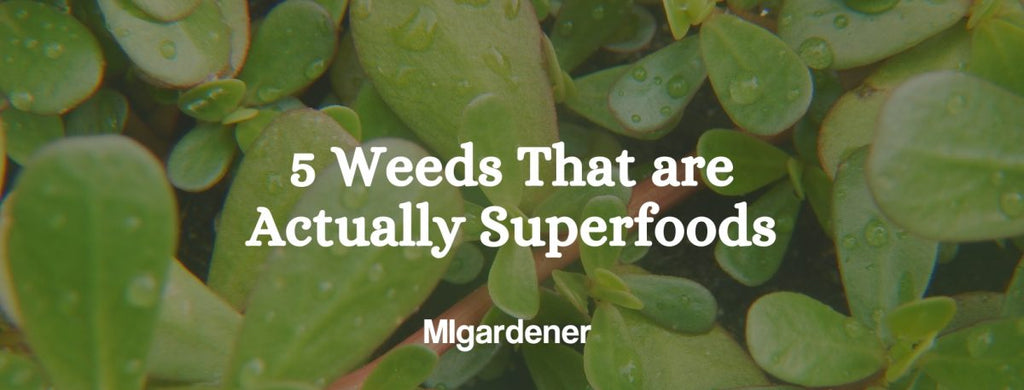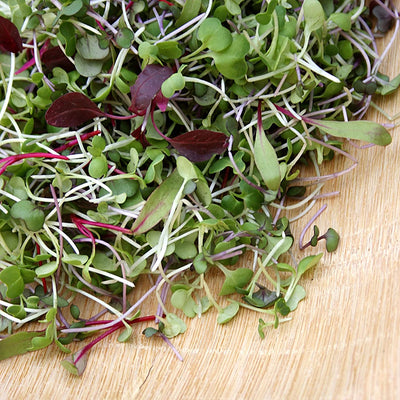
5 Weeds That are Actually Superfoods
Written by - Luke from MIgardener
A weed is only classified as an unwanted plant. The weed killer industry has made a fortune by making these plants out to be bad by calling them "invasive" "overtaking" and a "nuisance". The typical person walks by, or even ON thousands of these "weeds" every year! If only they knew the nutrient capabilities they held. In this post, we are going to discuss just five (of many) weeds that are not only edible but highly nutritious!
NOTE: ALWAYS BE 110% SURE BEFORE CONSUMING WILD EDIBLES
Chamomile
Chamomile is a plant in the same family as daisies. The leaves are small, wiry, and fennel-like. The flowers are rounded and either yellow or yellow with white pedals. Chamomile is used in teas to cure anxiety, sleep deprivation, upset stomach, bloating, and cold and flu symptoms. The plant is rich in vitamin A and C and minerals Zinc and Magnesium.
Dandelion
Dandelions are the posterchild of "weeds". They can be seen in yards and fields with their white puffball seed heads, or in early spring as a yellow flower. The best time to harvest dandelion leaves is when the plant is very young. As the plant matures it becomes bitter and difficult to consume. However, in early spring the leaves are sweet, tender, and super nutritious. Because the plant has a super deep taproot, the plant is able to take up minerals and nutrients that would normally never be possible by the typical lettuce or spinach. Dandelions are some of the most nutrient-dense greens in the world. Forget spinach, kale, and lettuce. Just 1 cup of greens (raw), contains 115% Vitamin A, 535% Vitamin K, 32% Vitamin C, and 10% calcium (along with many other vitamins and minerals. They are also rich in fatty acids which aid in joint health.
Vietnamese Coriander
This very unique "weed" grows almost anywhere the soil is hard, compacted, and lacking nutrients. It can be seen crawling along the ground and can be identified by small white clusters of balls for flowers. The leaves are easily the most recognizable feature. They are long, spear-shaped, and have a dark green triangle midway through the leaf. Vietnamese coriander is suggested to be used in cooking as it can be slightly bitter raw. However, little is known about the herb. It has been used by the Vietnamese people for hundreds of years. The oils released from the leaves are very powerful when compared to other herbs.
Purslane
Purslane is a very old weed. In ancient times, this low lying succulent has been consumed as a staple green in several cultures. In Chinese medicine, it is even said that the leaves of the purslane were to be used to cure confusion and aid in memory. The plant grows just about anywhere and can be seen by its very obvious plump succulent leaves. Purslane is great raw, but can also be used in salads, smoothies, and in cooking. It has a slight lemony citrus flavor, with a slightly slippery mouth feeling similar to that of cactus. The plant has the highest amount of Omega 3 and omega 6 fatty acid amount by weight of any green ON EARTH. Just 1 cup of raw purslane contains 44% the daily value of Vitamin A, and 35% vitamin C, 25% iron, 17% magnesium, 12.5% copper, and almost 350 mg of Omega 3!
Lambsquarter
This aggressive growing plant can be seen on roadsides, ditches, fields, and other places where the land has gone unmanaged. The plant grows tall and has soft, grey, lobed leaves. The leaves look slightly silvery. When young, the leaves are reminiscent of spinach, have a delicate flavor, and are delicious raw or cooked. As the plant gets older and more mature the leaves become slightly more bitter and sauteing them with chicken is delicious. Lambsquarter was eaten as a staple food during the great depression and many people who were poor would eat it because of its great abundance. This gave rise to the popular term "famine food". Just 100 grams of the leaves (about that of a normal serving of salad) contains 16% dietary fiber, 133% daily value of Vitamin C, 232% Vitamin A, 31% Calcium, 26% riboflavin, and 13% potassium. Not to mention 310 mg of Omega 3 fatty acids. Here is a VIDEO from my friend over at the Suburban Homestead showing you some simple recipes you can make with Lambsquarter.
Did you find this post helpful? MIgardener is passionate about sharing free gardening tips and information! If you are looking for inspiration in the garden, make sure to check out our Pinterest page. New ideas and inspiration can be found there at any time.
Let us know in the Facebook comments what you would like to hear next from the MIgardener blog! I hope this little introduction sparked some curiosity for you. Check us out at MIgardener.com or on youtube, Instagram, and Facebook.






Love this! Very informative! Thanks, Luke!
Luke,
Thank you for another helpful tip. You are always spot on!
Blessings!
Sue
Are there any uses for camomile before the flowers open
Wow! Thanks for that information! That is good to know. This year I would like to harvest some of these. Thanks so much. Who would have guessed?
Leave a comment